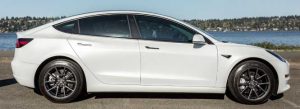Road Rage Statistics and Insights for 2023-2024
- Nearly 8 in 10 drivers show aggressive driving behaviors.
- Road rage involves extreme aggression or anger by a driver to cause harm.
- Legislations have criminalized road rage to express its severity.
- Aggressive driving can lead to road rage, but it is not the same thing.
Aggressive Driving vs. Road Rage
- Aggressive Driving: Deliberate, unsafe driving endangering property or another.
- Common behaviors: Tailgating, speeding in heavy traffic, weaving in and out traffic, running red lights.
- Road Rage: Extreme deliberate, unsafe driving with significant risk.
- Common behaviors: Rude gestures, profanity, hitting another vehicle, using headlights to intimidate.
Statistics
- Over half of all fatal crashes involve road rage types like tailgating, yelling, or honking.
- Two hundred eighteen murders and 12,610 injuries were attributed to road rage in a seven-year period.
- Running late is the top reason for aggressive driving.
- In 2020, speeding led to 11,258 deaths.
- In 2021, with an average of 44 people per month being affected by road rage shootings, marking the deadliest year.
- Road rage deaths from gun violence have doubled post-pandemic.
Factors Influencing Road Rage
- Gender: Males are more likely to show road rage than females.
- Age: Drivers aged 25 to 39 exhibit the most road rage behaviors.
Danger of Road Rage
- Half of all road rage victims feel the urge to take revenge.
The commonality of Road Rage
- Almost 80% of drivers admit to experiencing road rage.
- 78% of drivers have engaged in aggressive behavior on the road.
Gun Violence and Road Rage
- Texas, Florida, and California lead in road rage incidents involving guns.
- Road rage gun incidents increased by 98% from 2017 to 2021.
- 1,732 people were shot due to road rage from 2017 to 2021.
Risk Factors
- Younger drivers (below 19) are more at risk.
- Road rage is more common in summer months and between 5 p.m. to 7 p.m.
- Convertible car drivers with tops up show more aggression.
Commute’s Contribution
- Road rage is prevalent among commuters, with traffic congestion being a key factor.
- Cities like New York City and Chicago have commuters spending over 100 hours in traffic annually.
Psychology Behind Road Rage
- Road rage may arise due to psychological reasons, including the ability to regulate emotions.
- Stress, crowded highways, and youth are also contributors.
- Angry drivers tend to be more impulsive and take more risks.
Impact on Car Insurance Rates
- Road rage is not covered in most car insurance policies.
- Guilty individuals might be liable to pay for losses and could face legal consequences.
- Insurance coverage might be dropped for those found guilty of aggressive driving.
- Gun Violence Trends:
- The spike in gun violence during the COVID pandemic has subsided.
- 2022 showed fewer gun homicides than the prior year.
- Road rage shooting deaths and injuries are increasing.
- Driver Behavior:
- According to AAA Foundation for Traffic Safety, 8 in 10 drivers experienced aggressive driving in the past month.
- Guns in cars may escalate road rage situations.
- Drivers with guns are likelier to exhibit road rage and aggressive driving.
- A 2017 study linked firearm presence in a vehicle to more aggressive driving.
- Statistics:
- Road rage injuries and deaths with guns have risen annually since 2018.
- 2018: 70 road rage shooting deaths and 176 injuries.
- 2022: 141 road rage shooting deaths and 413 injuries.
- In 2022, a person was shot in a road rage incident roughly every 16 hours.
- Regional Analysis:
- Every U.S. region has experienced road rage.
- New Mexico, Arizona, Oklahoma, Tennessee, and Wisconsin have the highest rates; they make up 8% of the U.S. population but saw 20% of road rage shooting victims.
- The southern U.S. sees the highest road rage shooting rates, twice that of the Northeast.
- The Northeast has stronger gun laws and lower road rage shooting rates.
- Concealed Carry and Road Rage:
- Loosening concealed carry rules correlates with more road rage.
- 2022:
- 8 states needed specific reasons for public gun carrying.
- 18 states needed a permit but not a “good cause.”
- 24 states did not require a permit.
- Permitless states in 2022 had the highest road rage shooting rates.
- Permitless states had nearly triple the rate of road rage shootings compared to stricter states.
- Permitless states had 27% more road rage incidents involving guns than states with a permit but no broad authority for the denial.
- Legal Implications:
- S. Supreme Court in June 2022 barred “good cause” justifications for concealed carry permits, potentially increasing road rage.
- Weakening permit systems correlates with a 13-15% rise in crime.
- States with weaker standards may encourage more people to carry guns in cars, leading to more tragic outcomes on roads.

Sell My Tesla Model 3 Long Range
- Aggressive Driving Stats:
- 80% of U.S. drivers displayed significant anger, aggression, or road rage in the past 30 days, based on 2019 AAA Foundation data.
- Aggressive Driving Management:
- Ignore inconsiderate driving; most drivers are just distracted or upset.
- Follow road rules:
- Keep safe following distances.
- Signal turns and lane changes.
- Allow others to merge.
- Use high beams wisely.
- Light horn taps only; avoid extended honking and gestures.
- Be mindful in parking areas: use one spot, and don’t ding adjacent cars.
- Handling Confrontations:
- Avoid engaging with or making eye contact with angry drivers.
- Stay calm, and don’t reciprocate aggression.
- If threatened, go to public places like police stations or hospitals.
- Attract attention with a horn but stay inside a locked car.
- If confronted, stay composed; if threatened, dial 911.
- Key Takeaways:
- Avoid causing others to alter their driving.
- Be understanding; it might not be personal.
- Do not engage: keep your distance and contact authorities if necessary.
Key Road Rage and Aggressive Driving Stats
The prevalence of road rage is alarmingly high, with around 8 out of 10 drivers admitting to aggressive driving behaviors. While not identical to road rage, such aggressive actions often escalate into extreme vehicular aggression characterized by hostile gestures, violent threats, and even physical harm. Within seven years, road rage was responsible for 218 murders and over 12,000 injuries. Many factors contribute to road rage, including age (with those between 25 and 39 being more prone), gender (males showing higher tendencies), and certain driving conditions (such as evening rush hours and summertime). Interestingly, convertible drivers exhibit more aggression when their tops are up. Urban environments like NYC and Chicago, where commuters spend excessive hours in traffic, can exacerbate the problem.
Additionally, there has been a worrying rise in gun violence associated with road rage. For instance, states with laxer gun-carrying regulations report more road rage shootings. Disturbingly, regions like the southern U.S. experience higher shooting rates than the Northeast, which boasts stronger gun laws. In 2022 alone, road rage shootings claimed 141 lives, marking a sharp rise from 70 deaths in 2018. The Supreme Court’s decision in 2022 regarding “good cause” justifications for concealed carry permits could potentially worsen the situation.
Strategies to combat aggressive driving involve:
- Adhering to road rules.
- Avoiding engagement with angry drivers.
- Practicing understanding and patience on the road.
It’s crucial to remember that, more often than not, aggression on the road is impersonal. In situations of potential conflict, drivers are encouraged to prioritize safety by keeping a distance and, if necessary, contacting authorities.
Cited Sources:
- https://driversed.com/trending/wake-up-call-7-shocking-road-rage-statistics-you-didnt-know
- https://everytownresearch.org/reports-of-road-rage-shootings-are-on-the-rise/
- https://exchange.aaa.com/safety/driving-advice/aggressive-driving/
- https://one.nhtsa.gov/people/injury/research/aggdrivingenf/pages/introduction.html
- https://www.azfamily.com/2023/08/17/new-statistics-show-arizona-ranked-second-road-rage-shootings/
- https://www.bankrate.com/insurance/car/road-rage-statistics/
- https://www.octotelematics.com/blog/road-rage-statistics-2022/
- https://www.thezebra.com/resources/research/road-rage-statistics/


